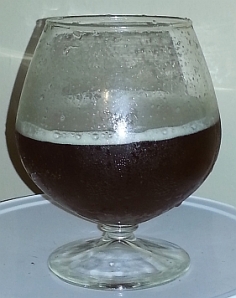If you don’t know me, why should it matter what I’m blathering about? In other words, not everyone with a voice on the internet is an expert, so how can you tell the difference? I’ll make it easy for you: I’m not an expert. I have a lot of learning, experience, and skill – but I’m not Jamil Zainasheff or Charlie Bamberg. I like to learn from others and hope that you can learn something from me, or at least be mildly interested and amused. But I really do know what I’m talking about, and to help you get a feel of “where I’m comin’ from” when I say something, here’s a bit of where I’m at in my brewing exploits:
It’s a fairly common joke that I was born to be a brewer. My mother was born in Germany to Czech parents and grew up in Brewer, Maine. My father’s family traces ancestry from Scotland through Pennsylvania Dutch immigrants (from that area of Europe between France, the Netherlands, Belgium, and Germany with very unique beers). Family rumour has it that my great-grandfather was a moonshiner. My father’s high school mascot was “The Brewers” and he brewed beer in college and spent some time as a bartender in Seaside Heights. An awful lot of silly beer-centric coincidences, there, eh?
I grew up on my father’s stories (told sparingly and only on rare occasion) of his post-prohibition college-era lifestyle (something totally at odd with the calm and staid man I saw before me daily). Stories of the communal pot of stew that was brewed weekly to provide their entire sustenance and the roommate whose response to everything was “Heavy.” and lived a lifestyle that my young mind pictured as looking like PigPen from Peanuts (that was the 60’s). My favorite stories, though, were of the batches of beer brewed in trash cans made of half table sugar with the basic baking malt extract and topped with bread yeast. The best was the story of the bottle bombs that they dealt with by crouching behind a sheet of plywood with a small hole and a pellet gun. For those that have access to Canada’s public broadcasting TV network, these stories may remind you of watching The Red Green Show and the handy-man exploits of the cast. The oft-quoted sayings of Possum Lodge included such snippets of wisdom as: “Quondo omni flunkus moritati.” (the lodge motto, which may or may not be spelled right, and translates to “When all else fails, play dead.”) and the Man’s Prayer (“I’m a man. But I can change. If I have to. I guess. Amen.”). But then, of course, was the ultimate observation that explains much of why we men do some of the things that we do: “If the women don’t find you handsome, they should at least find you handy.” (If you’ve not seen The Red Green Show, Home Improvement was a poor copy with a lot more network money – find some clips (or entire shows) on YouTube…it’ll be worth it!)
I got into bartending in college, first at private parties, then occasionally subbing in as a temp barback or beertender – I really developed a knack for mixing unique incredible drinks on the fly to suit a customer’s palate-of-the-moment. I spent a lot of time in bars during the mid-90’s an on, working it in all respects, from serving and bouncing, to working with musicians to help produce and put on shows (booking, artist relations, pr, event security at all levels, sound and light tech, pretty much everything). I picked up a T.I.P.S. Training certification and a Bartending Certificate in the process. I’ve always had a bit of a finger on the pulse of good beer from my first illictly-underage taste of Guinness. Several friends and other college associates opened small breweries or brewpubs during the brief craft beer bubble in the late 90’s that ended up performing as most of them did in that era – lots of passion and no business savvy or businessmen that knew nothing about beer were the norm. In fact, the Main Street Brewing sticker was still on my snowboard when I sold it a few years ago.
When some friends in the same building I was living in started homebrewing, I jumped at the chance to help out and learn what I could (which mostly amounted to crushing the grains with a rolling pin and sanitizing the bottles in the dishwasher). I helped out with a few batches, got to sample plenty of the results, and learned a lot in the process – including that I couldn’t afford to buy the gear for it as the broke college student that I was. So a long break ensued.
After many long and diverse pathways, my life led from being a computer programmer to a theatre tech wizard into travelin’ hippy vendor (getting paid to go see live music!). A bad car accident led into working a bottling line before being a retail sales department manager and natural talents led me into architectural drafting and design (a surveyor, highway builder, railroad engineer, electrical engineer, and an architect all in the immediate family). That led into structural design and off into surveying, civil design, and even some mechanical and electrical design work.

“The Sails” on custom-built island in the Bay of Gibraltar (one of my structural projects)
Then the economy crashed and so did my firm, downsizing to survive. Suddenly skills without credentials meant little. I looked around at what was happening and all job markets were suckin’ it. Even construction, the usual safe-zone industry, was down – in fact, worse than most others. Odds of getting another design job plummeted. But what always does good in a recession? ALCOHOL. And this time around, it was the flavored rums/vodkas and craft beer that were booming. Time to change modes and rethink my life plan….to provide myself a strong career opportunity doing something that I truly enjoy, that will provide continuous opportunities for both learning and creative release….brewing is one choice that hits all of these things, and it was one of the only industries still expanding right then.
So I bought a brew kit. And a book. Okay, lots of books. I’m a book geek. I love books. Well, good books, anyway. I love books so much, I had glasses in the first grade from reading too much. And constantly got in trouble for reading during class all through school (well, for reading something other than the class subject matter). Anyway, the point is, I happily picked up several of the more popular titles. And read them cover-to-cover. And researched online. And made notes. Lots of notes. While drinking. I can’t read most of them. But I did pick up a lot of great tips and am sure that at least some of the credit for my first batch turning out so well had a lot to do with it.
By the second batch, I was already supplementing the basic recipe kit (Northern Brewer’s Breakfast Stout) with different specialty grains and hops, as well as adding bakers’ chocolate and vanilla beans. And proceeded to get more off the wall after that. Always experimenting in some way, whether a new style, new ingredients, new techniques or equipment, even seeing if I could copy a commercial beer or repeat/improve one of my own.
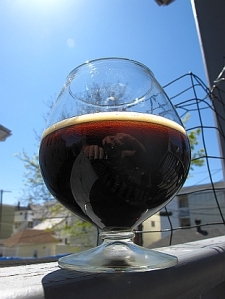
Chocolate-Vanilla Stout
Shortly thereafter, I ended up with a cool part-time job managing a blueberry farm that also had grapes, blackberries, roses, apples, pears, peaches, fields of mustard, and all sorts of other herbs and food crops. It was inevitable that some of the blueberries found their way into a beer, and then there were a few wines… All during this summer, my iPod was constantly loaded with all of the brewing podcasts that I could find: nearly every back episode of every show on the Brewing Network, Basic Brewing, etc., as well as books-on-tape recordings of some of the heavier brewing texts, like those from Charlie Bamberg. And watched video podcasts at home as well. And of course, there were more books to read all the time. With a lot of conflicting information, confusing information, or information that is only accurate if you pay attention to what decade it was written in and adjust for it.

- Apfelwine
However, I started really studying the industry that I had chosen to get into. I didn’t want to end up being one of the guys like the ’90s brewers that failed. Contract breweries, distribution or packaging breweries, or brewpubs, there were a lot of business models. I noticed two consistent things that were problems/opportunities to succeed. First, the successful brewers found ways to balance out the issues of sales seasons coming and going, usually by engaging the local population as a large percentage of their customer base. Second, they had multiple sales models, such as distributing bottles and running a full bar. The most successful combination that hit everything was the local brewpub that caters to the locals with outstanding quality and balances out sales of beer with sales of food. I needed to learn restaurant operations! After the season was up, I started working for a restaurant. I quickly trained my way up through pretty much every position in the restaurant, as I could see the value in learning the business model from every perspective. After a few months, I was offered the option of getting into the management track or going into baking if I wanted to. There were a number a reasons I chose what I did, but baking was a good chance to learn a lot more about the lifecycles of yeast and bacteria (we did a lot of sourdough products too), how they react to temperature, moisture, sugars, etc. So I spent two years working the night shift and got very very good at it. (Okay, so I was never fast enough for them to praise, but my quality was outstanding.)
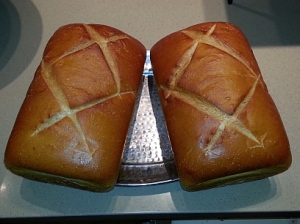
Bread Loaves
During this time, I was, of course continuing brewing experiments, reading/listening, and studying different beer styles and classic beers (how? by sampling, of course!). I also started experimenting with using spent grains, malt extracts, and hops in my cooking. I started growing my own hops. And entered a few beers in contests for the feedback. What I got was quite helpful and brutally fair – but my first contest entries were still scoring in the mid-20’s to high 30’s (which is the Good to Very Good range), so I wasn’t complaining. I was also posting regularly to HomeBrewTalk.com (as DarkBrood) when Ray Daniels announced the celebratory reduced-rate Certified Beer Server exam (the first step in the Cicerone program) for $10. There’s a fair amount to it, and I had to stop and think a couple of times, but passed it with relative ease (and a tiny bit of sweat).

Hops Growing on my Porch
I brewed my first mead, attended my first homebrewing club meeting and later my first homebrewing event, the New England Homebrewers Jamboree. Not knowing what to expect, I brought along some homebrews in a cooler and tipped one into a pint glass as soon as I parked the car and walked over to the crowd to see what was going on. A lot like a beer fest without the restrictions, but I was getting laughed at for the pint pretty quickly with comments of “what is that, your chaser?” and “no, that’s gotta be a palate cleanser”. It was a fun day and a late night with many bizarre and unique samplings had. I also got to judge several categories in the competition, which was a great experience. I judged again at the New England Regional Homebrew Competition.
Through all of this, and continuing now, I also have been working on making more of my photography available for sale. I specialize in large-format landscapes and natural macro imagery (although I am also available for events and portrait work). A small gallery with rotating samples is at DigitalGibson Photography. A selection of images are available for sale through Fine Art America as rolled prints, framed prints, gallery-wrapped canvas, and all-new (super-cool!) metal prints that really bring scenes to life.
Since November, I have been a little busy:
- Left the restaurant job and started concentrated study on beer styles, cuisine, and industry
- Started a Twitter feed, updating interested people on my day-today brewing activities: @DarkBroodBrews
- Joined the local homebrewing club and gotten actively involved
- Passed the online BJCP exam and sat for the Beer Judge Tasting Exam. I am quite confident that I passed, but still waiting for the results to determine my actual ranking. I am currently a Provisional Beer Judge.
- I have two different beers entered in the Boston Homebrew Competition and will be judging at the event (my first time judging as an official BJCP Judge) next weekend.
- Bulk purchasing arrangements let me acquire a large stockpile of grain and ingredients to experiment with.
- I am registered to sit for the Certified Cicerone exam for the Craft Beer Institute in a couple of weeks.
- I have three beers and a mead registered to send to the National Hombrew Competition and have registered to judge (but not yet approved) for the Northeast Region in NYC.
- I am starting a new job on Monday morning as an Assistant Brewer at a local brewpub that is currently expanding into distribution and packaging. I will be an unpaid intern for 30 days with a full-time option at the end (as long as I don’t suck). There was also some talk about utilizing my baking background and working some of the spent grains into the kitchen for the restaurant.

So there’s a lot going on right now and it’s all on my plate at once, coming together after a few years of consistent work at all angles and a huge dose of right-time, right-place. My old website, Dark Brood Homebrewery, has been stagnant for a year, but the content there will migrate here eventually and it’ll be closed anyway (although I’ll be continuing to brew under that name at home).
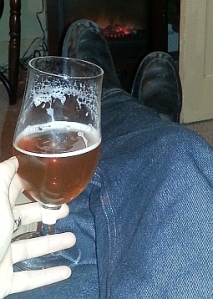
————————
Yet another good time to resort to RDWHAHB!






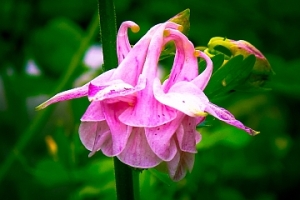


 After reading through the previous posts of the BJCP Update
After reading through the previous posts of the BJCP Update 






